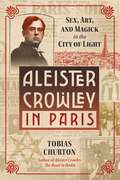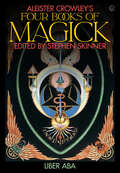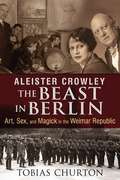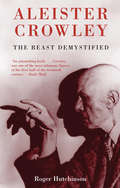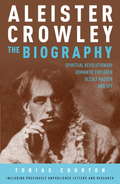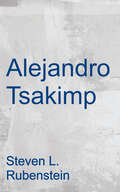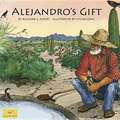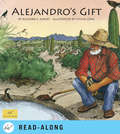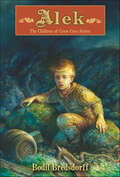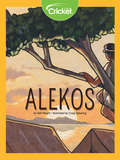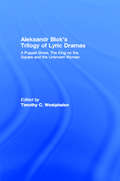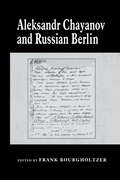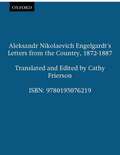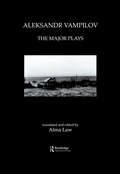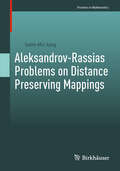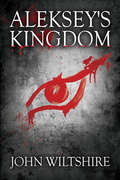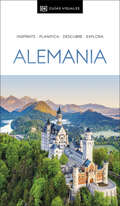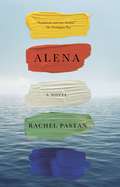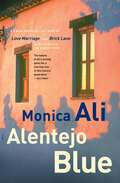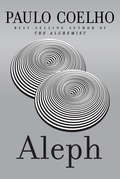- Table View
- List View
Aleister Crowley in Paris: Sex, Art, and Magick in the City of Light
by Tobias Churton• Investigates the tales of Crowley &“raising Pan,&” going mad, and working gay sex magick in Paris• Uncovers Crowley&’s involvement in the Belle Époque with sculptor Auguste Rodin and other artists and in the 1920s with Berenice Abbott, Nancy Cunard, Man Ray, André Gide, and Aimée Crocker• Reveals Crowley&’s &“expulsion&” from Paris in 1929 as a high-level conspiracy against CrowleyExploring occultist, magician, poet, painter, and writer Aleister Crowley&’s longstanding and intimate association with Paris, Tobias Churton provides the first detailed account of Crowley&’s activities in the City of Light.Using previously unpublished letters and diaries, Churton explores how Crowley was initiated into the Golden Dawn&’s Inner Order in Paris in 1900 and how, in 1902, he relocated to Montparnasse. Soon engaged to Anglo-Irish artist Eileen Gray, Crowley pontificates and parties with English, American, and French artists gathered around sculptor Auguste Rodin: all keen to exhibit at Paris&’s famed Salon d&’Automne. In 1904—still dressed as &“Prince Chioa Khan&” and recently returned from his Book of the Law experience in Cairo—Crowleydines with novelist Arnold Bennett at Paillard&’s. In 1908 Crowley is back in Paris to prove it&’s possible to attain Samadhi (or &“knowledge and conversation of the Holy Guardian Angel&”) while living a modern life in a busy metropolis. In 1913 he organizes a demonstration for artistic and sexual freedom at Oscar Wilde&’s tomb. Until war spoils all in 1914, Paris is Crowley&’s playground.The author details how, after returning from America in 1920, and though based at his &“Abbey of Thelema&” in Sicily, Crowley can&’t leave Paris alone. When Mussolini expels him from Italy, Paris becomes his home from 1924 until 1929. Churton reveals Crowley&’s part in the jazz-age explosion of modernism, as the lover of photographer Berenice Abbott and many others, and how he enjoyed camaraderie with Man Ray, Nancy Cunard, André Gide, and Aimée Crocker. The author explores Crowley&’s adventures in Tunisia, Algeria, the Riviera,his battle with heroin addiction, his relationship with daughter Astarte Lulu—raised at Cefalù—and finally, a high-level ministerial conspiracy to get him out of Paris.Reconstructing Crowley&’s heyday in the last decade and a half of France&’s Belle Époque and the &“roaring Twenties,&” this book illuminates Crowley&’s place within the artistic, literary, and spiritual ferment of the great City of Light.
Aleister Crowley's Four Books of Magick
by Stephen SkinnerThis is the masterpiece of occultist, magician and philosopher Aleister Crowley, introduced for the first time by one of the world's leading experts on Western esoteric traditions, Stephen Skinner."Do what thou wilt."Written in the early twentieth century, the four books contained within this collection make up one of the most complete and groundbreaking works on the practice of magick ever written. They are considered to be the masterpiece of occultist, magician and philosopher Aleister Crowley and the core texts for the religion of Thelema. Their influence on alternative western thought and philosophy cannot be exaggerated.Also known as Book Four, or Liber ABA, the four parts bring together many rituals, received texts, theorems and unequalled insights into the practice of magick, culminating in The Book of the Law, the central, sacred text dictated to Crowley by a preternatural entity. Anyone interested in yoga, ceremonial magic, esoteric thought, invocation, divination and beyond, or those looking to delve into the fascinating, playful and illuminating writings of a unique man, will find inspiration.For the first time, one of the world's leading experts on Western esoteric traditions and magic, Dr. Stephen Skinner, introduces the text, sharing his insights into Crowley's take on yoga, ceremonial magick and Thelema. His long involvement with magick, both as an academic and as a practitioner, enabled Dr. Skinner to highlight the differences between the psychological and the spirit-orientated approaches to magick, and to show how that dilemma shaped Crowley's practice and his founding of Thelema, enlightening the reader to many previously unknown connections.
Aleister Crowley: Art, Sex, and Magick in the Weimar Republic
by Tobias ChurtonA biographical history of Aleister Crowley’s activities in Berlin from 1930 to 1932 as Hitler was rising to power • Examines Crowley’s focus on his art, his work as a spy for British Intelligence, his colorful love life and sex magick exploits, and his contacts with magical orders • Explores Crowley’s relationships with Berlin’s artists, filmmakers, writers, and performers such as Christopher Isherwood, Jean Ross, and Aldous Huxley • Recounts the fates of Crowley’s friends and colleagues under the Nazis as well as what happened to Crowley’s lost art exhibition Gnostic poet, painter, writer, and magician Aleister Crowley arrived in Berlin on April 18, 1930. As prophet of his syncretic religion “Thelema,” he wanted to be among the leaders of art and thought, and Berlin, the liberated future-gazing metropolis, wanted him. There he would live, until his hurried departure on June 22, 1932, as Hitler was rapidly rising to power and the black curtain of intolerance came down upon the city. Known to his friends affectionately as “The Beast,” Crowley saw the closing lights of Berlin’s artistic renaissance of the Weimar period when Berlin played host to many of the world’s most outstanding artists, writers, filmmakers, performers, composers, architects, philosophers, and scientists, including Albert Einstein, Bertolt Brecht, Ethel Mannin, Otto Dix, Aldous Huxley, Jean Ross, Christopher Isherwood, and many other luminaries of a glittering world soon to be trampled into the mud by the global bloodbath of World War II. Drawing on previously unpublished letters and diary material by Crowley, Tobias Churton examines Crowley’s years in Berlin and his intense focus on his art, his work as a spy for British Intelligence, his colorful love life and sex magick exploits, and his contacts with German Theosophy, Freemasonry, and magical orders. He recounts the fates of Crowley’s colleagues under the Nazis as well as what happened to Crowley’s lost art exhibition--six crates of paintings left behind in Germany as the Gestapo was closing in. Revealing the real Crowley long hidden from the historical record, Churton presents “the Beast” anew in all his ambiguous and, for some, terrifying glory, at a blazing, seminal moment in the history of the world.
Aleister Crowley: The Beast Demystified
by Roger HutchinsonAleister Crowley (1875-1947) - mystic, writer, poet, astrologer, sexual revolutionary, painter, mountain climber and social critic - has a terrifying reputation. The contemporary press labelled him the 'wickedest man in the world', while he called himself the 'great beast'. Crowley dabbled in the occult, supported Germany in the First World War, was addicted to opiates, and many who associated with him died tragically in mysterious circumstances.Working from the starting point that behind the demonic reputation there stood a human being, and that beyond the self-proclaimed black magician there was a man hungry for publicity and fame, Roger Hutchinson lifts the smokescreen of mythology to reveal a truly astonishing figure.Why did this curious product of the Plymouth Brethren found the first 'hippy commune' in Sicily? What led this Cambridge graduate to be celebrated 20 years after his death on the cover of The Beatles' Sergeant Pepper's Lonely Hearts Club Band album? Why did Mussolini expel him from Italy? Why did a British magazine label him 'the man we'd like to hang'? Roger Hutchinson reveals the real Crowley: warts, wickedness, talent, courage, cowardice and all.
Aleister Crowley: The Biography
by Tobias ChurtonIn early 20th-century England, Aleister Crowley (1875-1947) was considered "the wickedest man in the world." Today he's seen as a prophet, a master of the occult, and a spiritual pioneer--and his reputation just keeps on growing. This new biography, written with the cooperation of leading Crowley scholars and including new revelations from Crowley's grandson, displays the full scope of the man's many achievements as poet, explorer, spiritualist, wartime spy, and a thinker as significant as Jung, Freud, or Einstein.
Alejandro González Iñárritu (Contemporary Film Directors)
by Celestino Deleyto Maria Del AzconaThis in-depth study of Mexican film director Alejandro González Iñárritu explores his role in moving Mexican filmmaking from a traditional nationalist agenda towards a more global focus. Working in the United States and in Mexico, Iñárritu crosses national borders while his movies break the barriers of distribution, production, narration, and style. His features also experiment with transnational identity as characters emigrate and settings change. In studying the international scope of Iñárritu's influential films Amores Perros, 21 Grams, and Babel, Celestino Deleyto and María del Mar Azcona trace common themes such as human suffering and redemption, chance, and accidental encounters. The authors also analyze the director's powerful visual style and his consistent use of multiple characters and a fragmented narrative structure. The book concludes with a new interview with Iñárritu that touches on the themes and subject matter of his chief works.
Alejandro Tsakimp: A Shuar Healer In The Margins Of History (Fourth World Rising Ser.)
by Steven L. RubensteinIn the heavily forested foothills of the Andes Mountains in Ecuador, a Shuar healer named Alejandro Tsakimp leads many lives. He is a peasant who sells cattle and lumber, a member of the Shuar Federation, a son and a brother, a husband and a father, a student and a worker, and, finally, a troubled shaman. Being a healer has long been both a burden and a resource, for the power to cure is also the power to kill, and shamans like Tsakimp are frequently in danger from accusations of witchcraft. But the situation of the Shuar today is especially perilous, and Tsakimp must constantly negotiate relations of power not only with rival shamans and his patients, but with the better-educated and richer officials of the Shuar Federation and his own siblings as well.
Alejandro's Gift
by Silvia Long Richard AlbertThis uplifting story about one man's gift to the desert and the gift he receives in return has a powerful environmental lesson.
Alejandro's Gift
by Sylvia Long Richard E. AlbertThis uplifting story about one man's gift to the desert and the gift he receives in return has a powerful environmental lesson. Plus, this is the fixed format version, which will look almost identical to the print version. Additionally for devices that support audio, this ebook includes a read-along setting.
Alejandro's Sexy Secret
by Amy RuttanWhat happens in Vegas stays in Vegas... If only that were true! Surgeon Kiri Bhardwaj never expected to see sexy exotic dancer Alejandro Valentino again after their fantasy life-changing night together. But now they're face-to-face, and he's a specialist in her pediatric department! Working with Kiri proves to Alejandro that they haven't finished what they started all those years ago. But to claim what he's lost he'll have to lay his heart on the line and prove to Kiri their chemistry is for keeps!
Alek (The Children of Crow Cove Series)
by Bodil BredsdorffA little boy called Doup once came to live in Crow Cove, a little community nestled by the sea. Now he's ready to go by his birth name, Alek, and discover his own place in the world. Alek's journey takes him to the fishing village of Last Harbor, where he lives with his bitter older brother, works at an inn—and rescues a beautiful girl from ship wreckers who have killed her family. Murder, romance, and the eternal cycle of life and death all play a role in the exciting conclusion to the acclaimed Children of Crow Cove series.
Alek: From Sudanese Refugee to International Supermodel
by Alek WekSince the day she was scouted by a modeling agent while shopping at a London street fair when she was just nineteen, Alek Wek's life has been nothing short of a fantasy. When she's not the featured model in print campaigns for hip companies, or gracing the cover of Elle, she is working the runways of Paris, New York, and Milan to model for the world's leading designers, including Karl Lagerfeld for Chanel. But nothing in her early years prepared her for the life of a model.Born in Wau, in the southern Sudan, Alek knew only a few years of peace with her family before they were caught up in a ruthless civil war that pitted outlaw militias, the Muslim-dominated government, and southern rebels against each other in a brutal conflict that killed nearly two million people. Here is her daring story of fleeing the war on foot and her escape to London, where her rise from young model to supermodel was all the more notable because of Alek's non-European looks. A probe into the Sudanese conflict and an inside look into the life of a most unique supermodel, Alek is a book that will inspire as well as inform.
Alekos
by Nell WrightAlekos wants to be a mighty Greek soldier like Achilles! Despite being too small to fight, he stows away on a military ship. When an opportunity to ask his hero how to learn bravery and be a fierce warrior arises, will he be brave enough to take it?
Aleksandr Blok's Trilogy of Lyric Dramas: A Puppet Show, The King on the Square and the Unknown Woman (Routledge Harwood Russian Theatre Archive Ser.)
by Timothy C. WestphalenAleksandr Blok's Trilogy of Lyric Dramas gathers together for the first time in English translation the first three plays by Aleksandr Blok, the pre-eminent poet of Russian Symbolism and one of the greatest poets of the twentieth century. The three plays that constitute the trilogy - A Puppet Show, The King on the Square and The Unknown Woman - are pivotal documents in the development of modernist drama. In his productions of A Puppet Show; and The Unknown Woman, Meyerhold first began to work the basic tenets of his approach to grotesque and constructivist theatre. Moreover, A Puppet Show provided the inspiration and much of the foundation for Meyerhold's theoretical writings. As a result, these plays are indispensable to any student of Meyerhold or modernist theatre. The plays are presented in the context of the poetry from which they issued in order to suggest how Blok developed the themes and motifs of the plays in other genres.
Aleksandr Chayanov and Russian Berlin
by Frank BourgholtzerAleksandr Chayanov lived and worked in England and Germany in the 1920s, when he wrote many letters. He was also forced to write autobiographical material after his arrest in 1930. Frank Bourgholtzer uses this material in his account of this Russian utopian.
Aleksandr Nikolaevich Engelgardt's Letters from the Country, 1872-1887
by Aleksandr Nikolaevich EngelgardtAleksandr Nikolaevich Engelgardt's first letter "From the Country" appeared in the May 1872 issue of the literary-political journal Notes of the Fatherland, published in St. Petersburg. It was an immediate hit, and the following letters, published over the next ten years, were the most important work of this progressive publication. These letters constituted the centerpiece of debate about the peasant and Russian agriculture in Russia's post-Emancipation era. Engelgardt provided an eyewitness account of the state of agriculture and the success of the land reform, relations between the gentry and the peasantry, the structure of rural existence, and the moral climate in the villages near his estate of Batishchevo in Smolensk Province. For contemporary, educated Russians, Engelgardt was the undisputed authority and best source of information on the countryside. As the agricultural editor of the neo-Slavophile journal Rus' conceded in 1881, there was no one in Russia who could match Engelgardt's knowledge, force of argument, and precision in presentation and for that reason, the letters stood beyond criticism. This translation is ideal for anyone interested in Russian history and peasant studies.
Aleksandr Vampilov: The Major Plays (Russian Theatre Archive Ser. #Vol. 6.)
by Alma LawFirst Published in 1996. Routledge is an imprint of Taylor & Francis, an informa company.
Aleksandrov-Rassias Problems on Distance Preserving Mappings (Frontiers in Mathematics)
by Soon-Mo JungThis book provides readers with an engaging explanation of the Aleksandrov problem, giving readers an overview of the process of solving Aleksandrov-Rassias problems, which are still actively studied by many mathematicians, and familiarizing readers with the details of the proof process. In addition, effort has been put into writing this book so that readers can easily understand the content, saving readers the trouble of having to search the literature on their own. In fact, this book logically and kindly introduces the basic theories of related fields.
Aleksey's Kingdom (A Royal Affair)
by John WiltshireA Royal Affair: Book TwoDoctor Nikolai Hartmann escaped the Hesse-Davian dungeons. He fled civilized Europe to come to the vast wilderness of the New World, where he carved out a home in which he could love openly and without censure--Aleksey's Kingdom. However, there is an irritating green-eyed, dark-haired flaw in his new paradise. A king and a general, Aleksey has no intention of wasting his life away in a remote forest. When he agrees to accompany a group of soldiers to a distant outpost to discover why it has been mysteriously abandoned, Nikolai has no choice but to tag along. While traveling through the wilderness with their new companions, it does not take Nikolai and Aleksey long to realize that far from mounting a rescue operation, they are merely unwitting pawns in a far more sinister conspiracy. But their enemies have badly miscalculated by threatening anything Nikolai loves. In this merciless place of towering trees, where water plummets beyond the human ability to comprehend, Nikolai must unleash the unfettered savagery of his true nature to save Aleksey.
Alemania Guía Visual (Travel Guide)
by DK EyewitnessWhether you want to wander the cobblestone streets of a medieval village, seek out the coolest districts in Berlin, or check off a bucket list of iconic landmarks, your DK Eyewitness travel guide makes sure you experience all that Germany has to offer.Synonymous with art and culture, Germany is bursting with world-class museums, trendy galleries and creative hubs. But travel away from the towns and cities and you'll discover some of Europe's finest lakes, no fewer than 16 national parks and a coastline ripe for outdoor adventure.Our newly-updated guide brings Germany to life, transporting you there like no other travel guide does with expert-led insights, trusted travel advice, detailed breakdowns of all the must-see sights, photographs on practically every page, and our hand-drawn illustrations which place you inside the country's iconic buildings and neighborhoods. Inside DK Eyewitness Germany you will find: - A fully-illustrated top experiences guide: our expert pick of Germany's must-sees and hidden gems- Accessible itineraries to make the most out of each and every day- Expert advice: honest recommendations for getting around safely, when to visit each sight, what to do before you visit, and how to save time and money- Color-coded chapters to every part of Germany, from Berlin to Munich, Saxony to Hesse- Practical tips: the best places to eat, drink, shop and stay- Detailed maps and walks to help you navigate the region country easily and confidently- Covers: Berlin, Brandenburg, Saxony-Anhalt, Saxony, Thuringia, Southern Germany, Munich, Bavaria, Baden-Württemberg, Western Germany, Rhineland-Palatinate and Saarland, Hesse, North Rhineland-Westphalia, Northern Germany, Lower Saxony, Hamburg and Bremen, Schleswig-Holstein, Mecklenburg-Vorpommern.Only visiting Berlin or Munich? Try our DK Eyewitness Berlin or DK Eyewitness Munich and the Bavarian Alps.About DK Eyewitness: At DK Eyewitness, we believe in the power of discovery. We make it easy for you to explore your dream destinations. DK Eyewitness travel guides have been helping travelers to make the most of their breaks since 1993. Filled with expert advice, striking photography and detailed illustrations, our highly visual DK Eyewitness guides will get you closer to your next adventure. We publish guides to more than 200 destinations, from pocket-sized city guides to comprehensive country guides. Named Top Guidebook Series at the 2020 Wanderlust Reader Travel Awards, we know that wherever you go next, your DK Eyewitness travel guides are the perfect companion.
Alena
by Rachel PastanIn an inspired restaging of Daphne du Maurier's classic Rebecca, a young curator finds herself haunted by the legacy of her predecessor. At the Venice Biennale, an aspiring assistant curator from the Midwest meets Bernard Augustin, the wealthy, enigmatic founder of the Nauk, a cutting-edge art museum on Cape Cod. It's been two years since the tragic death of the Nauk's chief curator, Augustin's childhood friend and muse, Alena. When Augustin offers the position to our heroine (who, like du Maurier's original, remains nameless) she dives at the chance--and quickly finds herself well out of her depth. The Nauk echoes with phantoms of the past--a past obsessively preserved by the museum's business manager and the rest of the staff. Their devotion to the memory of the charismatic Alena threatens to stifle the new curator's efforts to realize her own creative vision, and her every move mires her more deeply in artistic, erotic, and emotional entanglements. When new evidence calls into question the circumstances of Alena's death, her loyalty, integrity, and courage are put to the test, and shattering secrets surface. Stirring and provocative, Alena is the result of a delicious visitation of one of the most popular novels of the twentieth century on a brilliant and inventive novelist of the twenty-first.
Alena
by VariousAlena&’s life is a living hell. Since she arrived at a snobbish boarding school, she&’s been harassed every day by Philippa and the girls on the lacrosse team. But Alena&’s best friend Josephine is not going to accept that anymore. Not from the counselor or the principal, not from Philippa, and not from anyone else at that horrid school. If Alena does not fight back, then Josephine will take matters into her own hands. There&’s just one problem . . . Josephine has been dead for a year.* Now a major-motion picture!* Kim W. Andersson (The Complete Love Hurts) is the winner of the Swedish Comics Academy&’s Adamson statue—Sweden&’s most prestigious comics award!&“Kim W. Andersson&’s graphic novel Alena has unsurprisingly been described as Let the Right One In meets Show Me Love set in a boarding school. Count on vengeance, violence and broken teenage hearts.&”—Stockholm Film Festival
Alentejo Blue
by Monica AliAlentejo Blue is the story of a village community in Portugal, told through the lives of men and women whose families have lived there for generations and some who are passing through. For Teresa, a beautiful girl not yet twenty, Mamarrosa is a place from which to escape. For the dysfunctional Potts family, it is a way of running from trouble (though not eluding it). Vasco, a café owner who has never recovered from the death of his American wife, clings to a notion that his years away from the village, in the States, make him superior. One English tourist fantasizes about making a new life in Mamarrosa; for her compatriots, a young engaged couple, Mamarrosa is where their dreams fall apart. At the opening of Alentejo Blue, an old man reflects on his long and troubled life in this seemingly tranquil place, and anticipates the homecoming of Marco Afonso Rodrigues, the prodigal son of the village and a symbol of the now fast-changing world. When Marco does finally return, villagers, tourists, and expatriates are brought together, and their jealousies and disappointments inevitably collide.
Alentejo Blue
by Monica AliAlentejo Blue is the story of a village community in Portugal, told through the lives of men and women whose families have lived there for generations and some who are passing through. For Teresa, a beautiful girl not yet twenty, Mamarrosa is a place from which to escape. For the dysfunctional Potts family, it is a way of running from trouble (though not eluding it). Vasco, a café owner who has never recovered from the death of his American wife, clings to a notion that his years away from the village, in the States, make him superior. One English tourist fantasizes about making a new life in Mamarrosa; for her compatriots, a young engaged couple, Mamarrosa is where their dreams fall apart. At the opening of Alentejo Blue, an old man reflects on his long and troubled life in this seemingly tranquil place, and anticipates the homecoming of Marco Afonso Rodrigues, the prodigal son of the village and a symbol of the now fast-changing world. When Marco does finally return, villagers, tourists, and expatriates are brought together, and their jealousies and disappointments inevitably collide.
Aleph (Vintage International Series)
by Paulo CoelhoTransform your life. Rewrite your destiny. In his most personal novel to date, internationally best-selling author Paulo Coelho returns with a remarkable journey of self-discovery. Like the main character in his much-beloved The Alchemist, Paulo is facing a grave crisis of faith. As he seeks a path of spiritual renewal and growth, he decides to begin again: to travel, to experiment, to reconnect with people and the landscapes around him.Setting off to Africa, and then to Europe and Asia via the Trans-Siberian Railway, he initiates a journey to revitalize his energy and passion. Even so, he never expects to meet Hilal. A gifted young violinist, she is the woman Paulo loved five hundred years before--and the woman he betrayed in an act of cowardice so far-reaching that it prevents him from finding real happiness in this life. Together they will initiate a mystical voyage through time and space, traveling a path that teaches love, forgiveness, and the courage to overcome life's inevitable challenges. Beautiful and inspiring, Aleph invites us to consider the meaning of our own personal journeys: Are we where we want to be, doing what we want to do? Some books are read. Aleph is lived.
